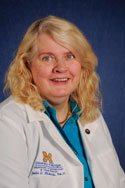MedicalResearch.com Interview with:
Chante Karimkhani MD
Columbia University College of Physicians and Surgeons, New York, New York,
Erika Hagstrom MD
Loyola University of Chicago Stritch School of Medicine, Maywood, Illinois
Robert Dellavalle MD, PhD, MPH
Department of Dermatology, University of Colorado Anschutz Medical Campus, Aurora, Colorado; Dermatology Service, US Department of Veterans Affairs, Eastern Colorado Health Care System, Denver, Colorado; Department of Epidemiology, Colorado School of Public Health, Aurora, Colorado
MedicalResearch: What is the background for this study? What are the main findings?
Response: Allocation of funding dollars to research is a critical and daunting task. While many factors may impact research-funding decisions, establishing a transparent priority-setting exercise is paramount. This is particularly important for the National Institutes of Health, which invests over $30 billion for medical research each year.
Diseases that have the greatest impact on our population warrant increased research dollars to reduce disease burden. The Global Burden of Disease Study (GBD) is an epidemiological effort to quantify the global burden of disease in a universal metric called disability-adjusted life years (DALYs).
Focusing on our particular interest of dermatology, we investigated the 2012-2013 NIH funding for 15 skin diseases and matched this to corresponding DALY metrics. Our results demonstrated that melanoma, non-melanoma skin cancer, and leprosy were over-funded by the NIH according to DALY metrics.
In contrast, dermatitis, acne vulgaris, pruritus, urticaria, decubitus ulcer, fungal skin diseases, alopecia areata, cellulitis, and scabies appeared under-funded. Three skin diseases, bacterial skin diseases, viral skin diseases, and psoriasis, were well-matched in terms of NIH funding and disease burden. Disease burden is one of a myriad of factors that may impact funding priorities.
(more…)
 MedicalResearch.com Interview with:
Eyal Leshem, MD
Division of Viral Diseases,
US Centers for Disease Control and Prevention,
Atlanta, Georgia
Medical Research: What is the background for this study? What are the main findings?
Response: Routine vaccination of US children to protect against rotavirus began in 2006. The purpose of this study was to examine the effect of implementation of rotavirus vaccine on gastroenteritis and rotavirus hospitalizations of children younger than 5 years old.
The main finding from this study is that hospitalizations for diarrhea in U.S. children younger than 5 years old decreased dramatically during 2008 to 2012 following implementation of routine rotavirus vaccination in 2006. Additionally, seasonal peaks of hospitalizations for rotavirus illness were considerably reduced after the vaccine was implemented compared to years prior to rotavirus vaccination.
By 2012, rates of rotavirus hospitalization declined by approximately 90% across all settings and age groups. Factors such as increasing vaccine coverage as well as herd immunity resulting in less transmission of rotavirus may be responsible for this large decrease.
(more…)
MedicalResearch.com Interview with:
Eyal Leshem, MD
Division of Viral Diseases,
US Centers for Disease Control and Prevention,
Atlanta, Georgia
Medical Research: What is the background for this study? What are the main findings?
Response: Routine vaccination of US children to protect against rotavirus began in 2006. The purpose of this study was to examine the effect of implementation of rotavirus vaccine on gastroenteritis and rotavirus hospitalizations of children younger than 5 years old.
The main finding from this study is that hospitalizations for diarrhea in U.S. children younger than 5 years old decreased dramatically during 2008 to 2012 following implementation of routine rotavirus vaccination in 2006. Additionally, seasonal peaks of hospitalizations for rotavirus illness were considerably reduced after the vaccine was implemented compared to years prior to rotavirus vaccination.
By 2012, rates of rotavirus hospitalization declined by approximately 90% across all settings and age groups. Factors such as increasing vaccine coverage as well as herd immunity resulting in less transmission of rotavirus may be responsible for this large decrease.
(more…)












